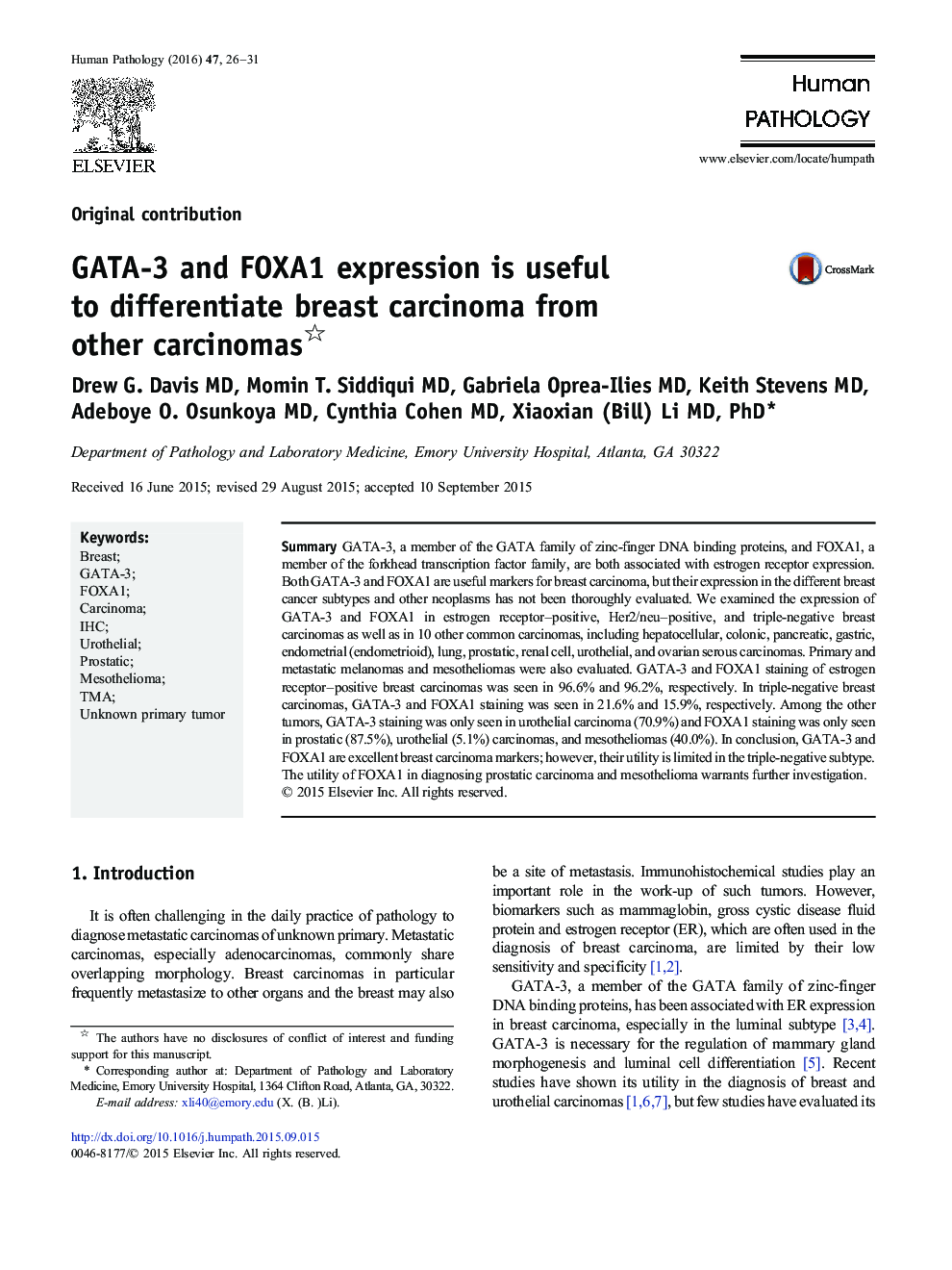| کد مقاله | کد نشریه | سال انتشار | مقاله انگلیسی | نسخه تمام متن |
|---|---|---|---|---|
| 4132484 | 1271384 | 2016 | 6 صفحه PDF | دانلود رایگان |

SummaryGATA-3, a member of the GATA family of zinc-finger DNA binding proteins, and FOXA1, a member of the forkhead transcription factor family, are both associated with estrogen receptor expression. Both GATA-3 and FOXA1 are useful markers for breast carcinoma, but their expression in the different breast cancer subtypes and other neoplasms has not been thoroughly evaluated. We examined the expression of GATA-3 and FOXA1 in estrogen receptor–positive, Her2/neu–positive, and triple-negative breast carcinomas as well as in 10 other common carcinomas, including hepatocellular, colonic, pancreatic, gastric, endometrial (endometrioid), lung, prostatic, renal cell, urothelial, and ovarian serous carcinomas. Primary and metastatic melanomas and mesotheliomas were also evaluated. GATA-3 and FOXA1 staining of estrogen receptor–positive breast carcinomas was seen in 96.6% and 96.2%, respectively. In triple-negative breast carcinomas, GATA-3 and FOXA1 staining was seen in 21.6% and 15.9%, respectively. Among the other tumors, GATA-3 staining was only seen in urothelial carcinoma (70.9%) and FOXA1 staining was only seen in prostatic (87.5%), urothelial (5.1%) carcinomas, and mesotheliomas (40.0%). In conclusion, GATA-3 and FOXA1 are excellent breast carcinoma markers; however, their utility is limited in the triple-negative subtype. The utility of FOXA1 in diagnosing prostatic carcinoma and mesothelioma warrants further investigation.
Journal: Human Pathology - Volume 47, Issue 1, January 2016, Pages 26–31